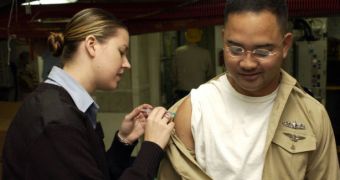According to the US Centers for Disease Control and Prevention (CDC), it may be that the swine flu vaccine, a new drug created specifically for the recent strain of the virus that caused a global pandemic, won't be available to the general public until after mid-October. The announcement was made yesterday by Dr. Thomas Frieden, who is the new director of the Centers, after President Barack Obama's science advisors asked experts to speed up the production process.
The specialist also mentioned that the tests available at the moment for the A-H1N1 influenza strain, more commonly known as the swine flu, were not precise enough to accurately identify all those who were sick. Under these circumstances, the official believes, applying the vaccine efficiently to the population may be a serious challenge. “We have literally mobilized more than 1,000 people at CDC who work on H1N1,” Frieden revealed in a recent interview, conducted by Reuters and the Associated Press. The discussion will be aired on Sunday, on C-SPAN.
“We wish we had new vaccine technology that would allow us to turn on a dime and make new vaccine in terms of weeks or months. It's not possible with today's technology to do that,” the expert said. On Monday, the President's Council of Advisors on Science and Technology urged scientists to complete a new vaccine for the swine flu strain as fast as possible. However, that seems unlikely to happen before mid-October. That is when the official vaccination campaign is scheduled to begin. But the biggest concern that experts are having now is related to the virus remaining unchanged.
If the strain mutates, then the new vaccines would be useless, and many people would die. The CDC and the World Health Organization (WHO) are keeping a close eye on tropical and equatorial regions, where the virus persists around the year, and where it may recombine with other strains to create new superbugs. Even if that doesn't happen, the WHO estimates that two billion people will fall sick around the world. In the president's science report, his advisors noted that between 30,000 and 90,000 people could die, and that about 1.8 million could clog the hospitals.

 14 DAY TRIAL //
14 DAY TRIAL //